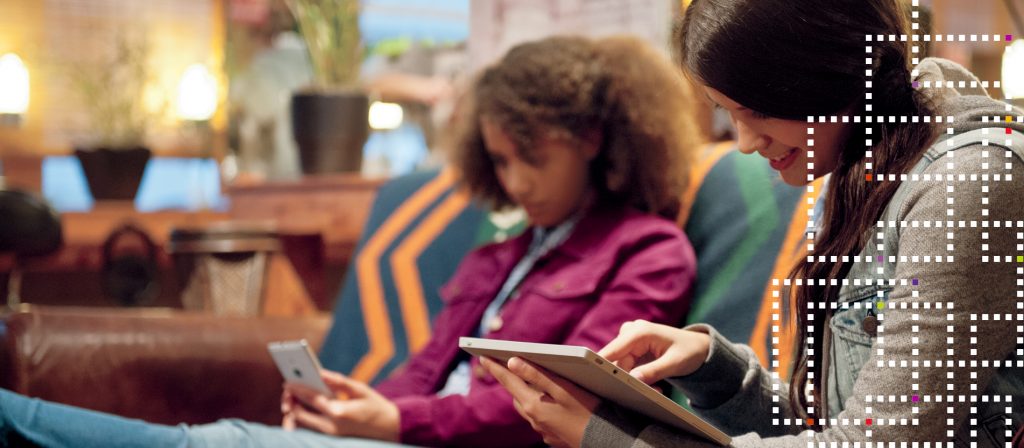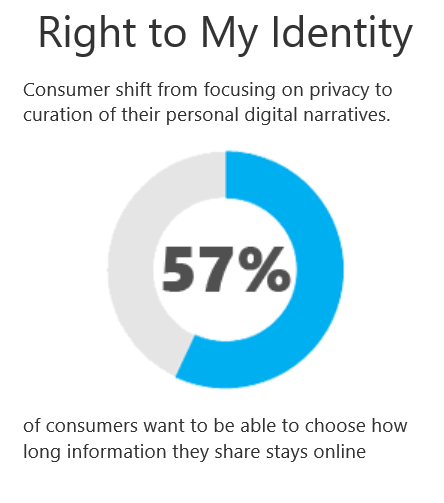
Global consumer research: Tracking apps, connected ‘things,’ and comfort in data sharing are on the rise – but so are demands for control
Consumers are becoming more comfortable sharing information about their personal lives via Internet-connected devices and online compared to two years ago. But there’s also been a shift to a more savvy and demanding consumer who wants to stay in control of their digital persona and how their personal information is used, to help them improve their lives.
Those are among the findings from the Microsoft Digital Trends 2015 report, released March 9. More than 13,000 consumers in 13 countries were surveyed. The research shows significant changes in attitudes toward digital services and connected devices since the last survey was conducted in 2013.
“Two years ago, we saw that consumers were really concerned about privacy; they wanted to be more anonymous,” says Natasha Hritzuk, senior director of Global Consumer Insights at Microsoft. “But what we’re really starting to see is a move away from that privacy conversation, and more of a conversation around controlling the narrative about ‘my digital self.’ Globally, 78 percent of consumers are aware of how their online presence, and the data it generates, powers the digital world. Consumers told us that they’re concerned not with the fact their footprint is out there, but rather what that footprint says about them and how effectively it translates into experiences they want.”
Giving consumers the option to share – and control – their information is key. In fact, 57 percent of people want to be able to control how long their information stays online, a trend Microsoft calls “Right to My Identity.”
Imagine you are playing a game online with friends; you want your top scores, badges and trophies to shine for all fellow gamers to see. You might even want your achievements displayed as the background to your profile – as many Xbox One users proudly do – so that your opponents know just who they are facing from the get-go.
You might also want to make those less-than-winning scores disappear.
Or perhaps you are a little less demonstrative, and instead prefer to share only your demographics, location and interests with various online services. You still do that for a reason. It might be because you want new experiences or a connection with others in your life.
In either case, people “handing over” their data expect something in return. An app that asks to track your geo-localization without further explanation will seem intrusive. But an app that asks to track your geo-localization in order to offer price reductions on your favorite pizza as you approach the vicinity of a restaurant will seem valuable to a pizza lover. A consumer is unlikely to share personal data when the purpose of doing so, the “return on investment” if you will, is not clear.
Consumers also continue to face “information overload,” and are looking for ways to help tone down the white noise in their lives, according to the research; with a substantial 80 percent interested in services that help them manage their data online.
 While more than 75 percent of those surveyed say they’re interested in wearable technology, and 60 percent are interested in the Internet of Things, connected homes and objects, most consumers want to understand the meaning of the information they’re getting. Growing amounts of data collection through these means have given rise to “life analytics” – where consumers exchange personal information in return for some analysis or added insight they can’t easily get for themselves.
While more than 75 percent of those surveyed say they’re interested in wearable technology, and 60 percent are interested in the Internet of Things, connected homes and objects, most consumers want to understand the meaning of the information they’re getting. Growing amounts of data collection through these means have given rise to “life analytics” – where consumers exchange personal information in return for some analysis or added insight they can’t easily get for themselves.
The Microsoft Band tells us how far we’ve run, or what our heart rates are, among other features. What will make it even more valuable is when it “starts to integrate other things that are outside of those realms,” says Hritzuk. In the future, the Microsoft Band could build in analytics that use information from Office, or perhaps your calendar, to help predict heart rate spikes, for example.
“So, when that big annual review meeting looms on the horizon, maybe the Band suggests taking a walk around the block before you meet with your boss to keep your blood pressure down,” she says. “Those are the kind of things that life analytics are about. It’s about the potential to start using different kinds of data to become much more useful, to become much more predictive and also to start to look at that consumer’s life in a much more holistic way.”
In an always-on digital world, consumers also want their technology to be “intelligently on” – meaning on during times that matter to them, according to the 2015 report results.
“Marketers have been driving to get the consumer to be always on. But we’re actually seeing a little bit of resistance from the consumers’ point of view about that always-on mentality,” Hritzuk says.
Consumers want to be “on” when it matters, to pay attention to the content they want because it’s relevant to them, Hritzuk explains. It’s not about being connected all the time, but about “being connected to the right content or service for my mindset at a particular time of my choosing,” she says.
As one consumer, interviewed during the research, said: “I don’t think we serve technology. The technology should serve us – to allow us to do the things we do in life when we want and better than before.”
Finally, consumers are also increasingly interested in helping to shape and design digital products and services – “life hacking” technology to suit their needs, according to the report.
Credit the rise of the coding culture for that, Hritzuk says. While not all of us know how or want to learn how to code, many of us do want to be able to adapt the digital services we use to make them more personalized and meaningful, to make them our own: 56 percent are more likely to engage in online experiences that allow them to personally shape the service, a trend Microsoft calls “Creative Me.”
Case in point: Many people use “Minecraft” as a way to express their creativity by building their own creations using the game’s virtual blocks – with no limits on what can be created, whether it’s a set for “Game of Thrones” or “Star Wars,” or putting together the biggest (digital) pyramid ever.
“You don’t have to be a geek to express yourself online – ‘Minecraft’ has proven that,” Hritzuk says. “It really speaks to that need that consumers have. Even though they can’t code, they still want a more visceral experience from their digital lives.”
Microsoft Digital Trends 2015 is the result of a partnership with the Future Laboratory and Research Now to investigate the future of digital behavior and technology to better understand how brands can meet consumers’ expectations today and in the future. A copy of the report is available for download.


















